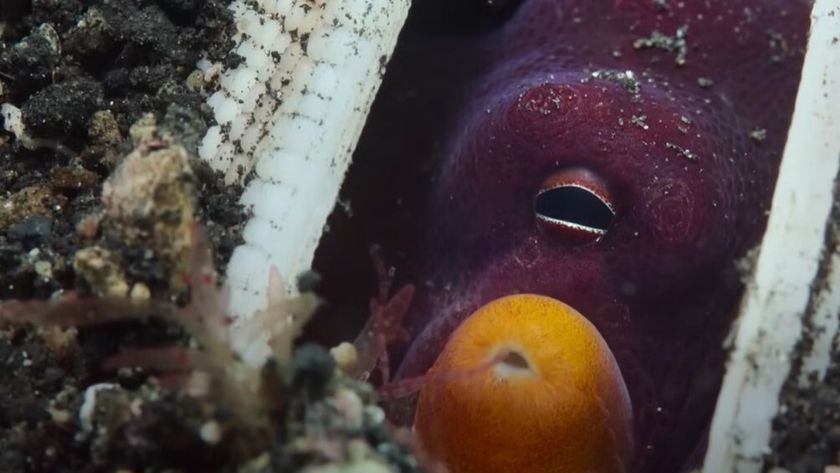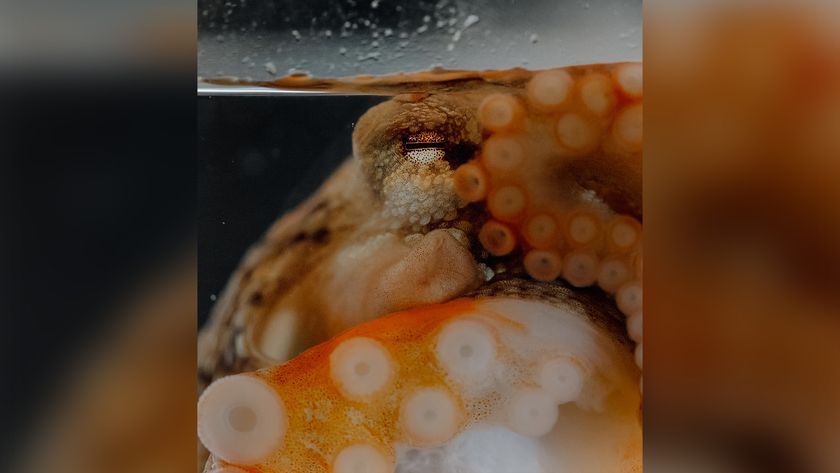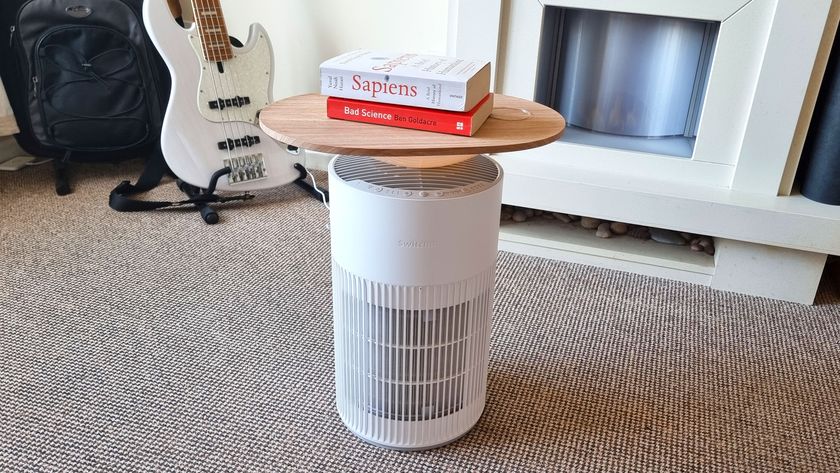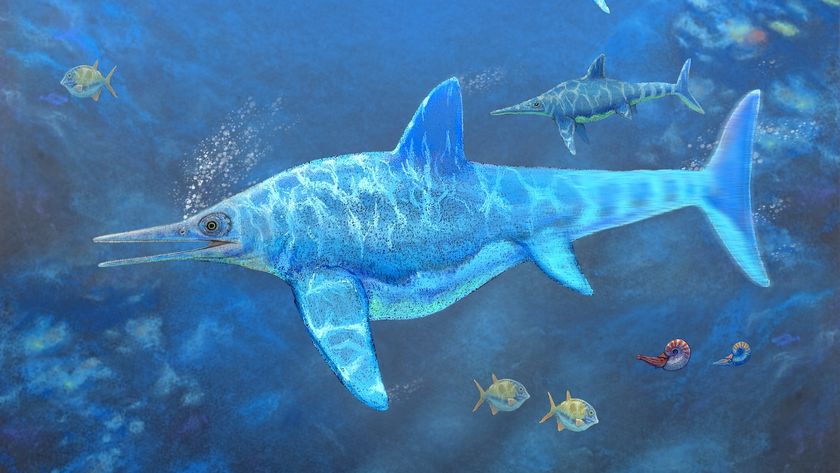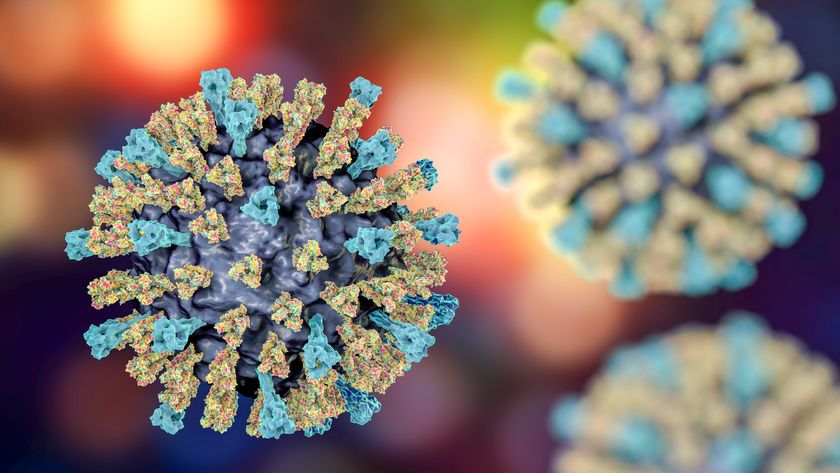Clever Octopus Mimics a Fish
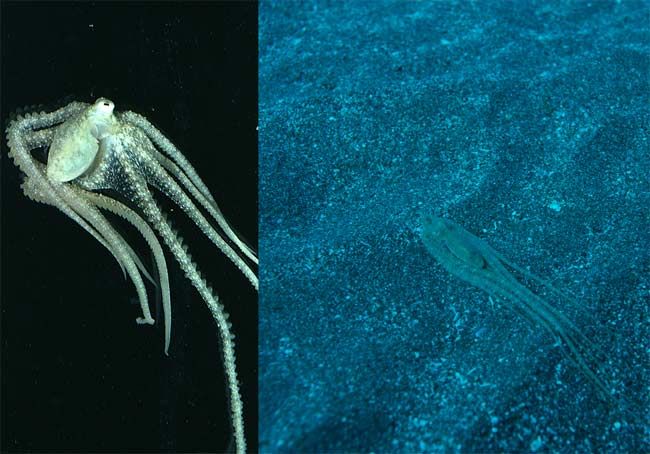
When it comes to blending in, the Atlantic longarm octopus is a pro, expertly changing color to match the sea floor. But when invisibility just won't do, this octopus has another trick up its eight sleeves: Make like a flounder.
Researchers have captured photos and video of the Atlantic longarm octopus mimicking the peacock flounder, a common flatfish that shares a sandy habitat with the octopus in Caribbean waters. The Atlantic longarm reverses the usual octopus arrangement, swimming forward instead of backward, arms trailing behind like flounder fins. It swims along the contours of the sea floor, even torquing its soft body so both eyes move to the left, just like a flounder.
"The animals have good camouflage, but when they move, motion gives away camouflage," Roger Hanlon, a senior scientist at the Marine Biological Laboratory at Woods Hole, Massachusetts, and lead author of the study, told LiveScience. "Instead of trying to be camouflaged while they're moving, which is difficult if not impossible, they turn themselves into flounder."
Clever creatures
Marine biologists have long known that octopuses are wily creatures. They've been seen building mobile homes out of coconut shells, and occasionally cause havoc in aquariums by disassembling valves or short-circuiting lights. They're also masters of camouflage, with color-changing skin and contortionist bodies that can blend in with rocks and algae.
But few octopuses have been known mimics. In biology, mimicry refers to an animal pretending to be another animal, like a moth playing copycat to a spider to avoid being eaten. Two species of Indonesian octopus have been seen mimicking flatfish, and the male of one species of cuttlefish disguises itself as female to sneak by larger males and mate with real females. Cuttlefish, octopuses and squid are members of a group of animals called cephalopods. That makes the Atlantic longarm the fourth confirmed instance of cephalopod mimicry and the first in the Atlantic Ocean.
"Most of the dramatic behavior we've seen from cephalopods has all come from the Pacific," Jean Boal, a marine biologist at Millersville University who wasn't involved in the study told LiveScience. "So our plain little homegrown octopuses are doing some cool stuff."
Sign up for the Live Science daily newsletter now
Get the world’s most fascinating discoveries delivered straight to your inbox.
In 2004, Hanlon and a group of volunteers were diving off Saba Island in the Netherlands Antilles when one of them announced that he'd seen an octopus mimicking a flounder. Hanlon didn't believe it at first, but the man had snapped a picture. The next year, Hanlon and another volunteer group went back and spent 51 hours diving before finally spotting another flounder-mimicker. Gradually, the team acquired images and video footage from other divers, eventually finding the behavior in octopuses in five locations around the Caribbean.
{{ video="LS_100304_octopus" title="" caption="Credit: Roger Hanlon." }}
The need for a disguise
The researchers aren't sure why the flounder inspires mimicry. Octopus predators like eels and grouper often dart in to nip off a soft, unprotected arm or two, Hanlon said, so impersonating a harder-bodied flounder might make the longarm octopus look less "easily-nipped." Flounders also stay close to the sandy sea floor, so an octopus acting like one is never far from the safety of a quick burrow.
Where the octopuses come up with the behavior is also a mystery, Hanlon said, though he does have one tantalizing clue. In 1978, he caught a larval longarm and raised it to adulthood in the lab. The octopus sometimes swam forward in a flounder-like position. It had never seen a flounder or another octopus, suggesting that the behavior is innate, not learned.
The researchers hope to learn more about the Atlantic longarm's predators and self-defense mechanisms, Hanlon said. The intracoastal waterway in West Palm Beach, Florida, is a prime habitat for the species, and he plans to visit soon in search of more video footage.
"Animals that live out on sand planes and mud planes all have wonderful biological adaptations," Hanlon said. "When you do find animals out there, they're doing something extraordinary."
- Video –Clever Octopus Makes Like a Flounder
- Top 10 Amazing Animal Abilities
- 10 Animals That Use Tools

Stephanie Pappas is a contributing writer for Live Science, covering topics ranging from geoscience to archaeology to the human brain and behavior. She was previously a senior writer for Live Science but is now a freelancer based in Denver, Colorado, and regularly contributes to Scientific American and The Monitor, the monthly magazine of the American Psychological Association. Stephanie received a bachelor's degree in psychology from the University of South Carolina and a graduate certificate in science communication from the University of California, Santa Cruz.
